
Comprehensive insight on the factors that help determine optimal first-line therapy for a patient presenting with advanced renal cell carcinoma.

Your AI-Trained Oncology Knowledge Connection!


Comprehensive insight on the factors that help determine optimal first-line therapy for a patient presenting with advanced renal cell carcinoma.

Expert oncologists Matthew Campbell, MD, MS, and Brian Rini, MD, open their discussion on advanced renal cell carcinoma management by defining cornerstone treatment approaches.

Ursula A. Matulonis, MD, spoke about the next steps for mirvetuximab soravtansine in the treatment of patients with folate receptor α–high platinum-resistant ovarian cancer.

The panel closes their discussions by highlighting current unmet needs in multiple myeloma treatment and what excites them on the horizon.

Dr Patel continues the conversation of novel treatments with an examination of CAR T-cell therapies in multiple myeloma.
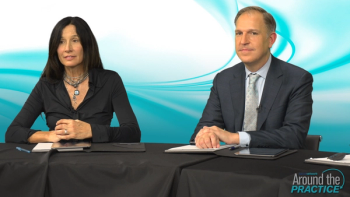
Dr Christina Gasparetto compares the results of the MAIA and SWOG0777 trials and discusses how the data has been practice-changing.

Closing out their module on transplant-ineligible NDMM management, expert panelists consider best practices regarding duration of therapy and adjustments to drug regimens.

Dr Varga and Dr Tuchman explain the factors for consideration when choosing an initial treatment regimen for patients with transplant-ineligible NDMM.
Comprehensive discussion on the array of treatment regimens available for patients with transplant-ineligible NDMM and how best to sequence therapy.
The randomized, placebo-controlled, double-blind phase 3 CALLA trial assessed the combination of durvalumab and chemoradiotherapy vs placebo and chemoradiotherapy.
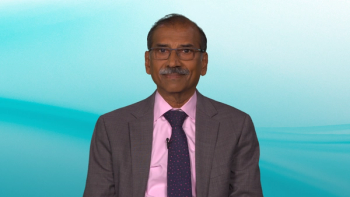
Expert perspectives on cornerstone induction therapy regimens used in patients with transplant-ineligible newly diagnosed multiple myeloma.
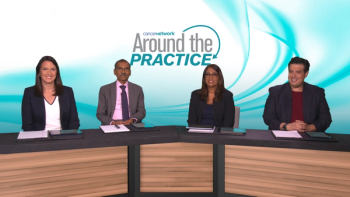
Switching their attention to the transplant-ineligible setting of newly diagnosed multiple myeloma, panelists center discussion around their second patient case.

PSMA-targeting PET ligand 18F-rhPSMA-7.3 yielded high detection rates for patients with recurrent prostate cancer regardless of factors such as PSA levels, PSA doubling time, or Gleason scores, according to Benjamin H. Lowenritt, MD, FACS.
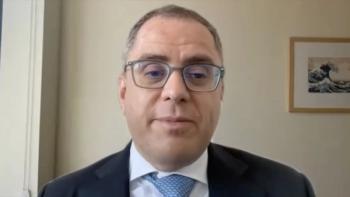
Future research into the management of unresectable hepatocellular carcinoma may involve combining local therapies with checkpoint inhibitors like durvalumab and tremelimumab, according to Ghassan K. Abou-Alda, MD.

Patient Elle Charnisky shares the symptoms that led to her diagnosis of HER2+ metastatic colorectal cancer, and the online resources she used for education after.
Tanios Bekaii-Saab, MD, provides a brief overview of the typical presentation and diagnosis of metastatic colorectal cancer.

Pooling data with other radiation trials, looking more closely at central non-small cell lung cancer, and exploring secondary outcomes represent the next steps in terms of analyzing stereotactic body radiation (SBRT) vs conventional hypofractionated radiotherapy (CRT), according to Anand Swaminath, MD.

Findings from the phase 3 CALLA trial indicated that intensity modulated radiation therapy was administered in 88.1% of patients with high-risk locally advanced cervical cancer treated with durvalumab and chemoradiotherapy vs 88.1% with placebo and chemoradiotherapy.
Ursula A. Matulonis, MD, discussued studies are being conducted assessing the use of mirvetuximab soravtansine in patients with folate receptor-α–positive platinum-resistant ovarian cancer.

Anand Swaminath, MD, reviews the design of the phase 3 LUSTRE trial comparing a 3-week conventional radiotherapy regimen with stereotactic body radiotherapy among patients with stage I medically inoperable non-small cell lung cancer.

Future focuses following the phase 3 SPOTLIGHT trial will include identifying sites of recurrence and different intensity levels for 18F-rhPSMA-7.3 in suspected recurrent prostate cancer, according to Benjamin H. Lowenritt, MD, FACS.

Expert oncologists focus on a final patient case of transplant-ineligible newly diagnosed multiple myeloma and reflect on the treatment armamentarium in this setting.

Before closing out their review of treatment for transplant-eligible multiple myeloma, panelists consider how they might adjust therapy to optimize tolerability or efficacy.

Melissa L. Johnson, MD, spoke about the design of the phase 3 POSEIDON trial how its data led to the recent approval of tremelimumab plus durvalumab and chemotherapy in patients with advanced non–small cell lung cancer.

Amrita Krishnan, MD, and Krina Patel, MD, review promising bispecific agents under investigation for multiple myeloma treatment.

Dr Krina Patel presents the case of a relatively young patient with relapsed multiple myeloma, and Dr Caitlin Costello shares her approaches to treating relapsed/refractory multiple myeloma in her clinical practice.

Drs Tuchman and Gasparetto present two profiles of patients with transplant-ineligible NDMM.

Cristina Gasparetto, MD, details how to assess treatment response and duration of treatment for transplant-eligible NDMM.

Expert hematologist-oncologists consider the role of maintenance and consolidation following the completion of transplant in patients with newly diagnosed multiple myeloma.

A brief review of the role of transplant in patients with newly diagnosed multiple myeloma and how it can be best coupled with systemic treatment.